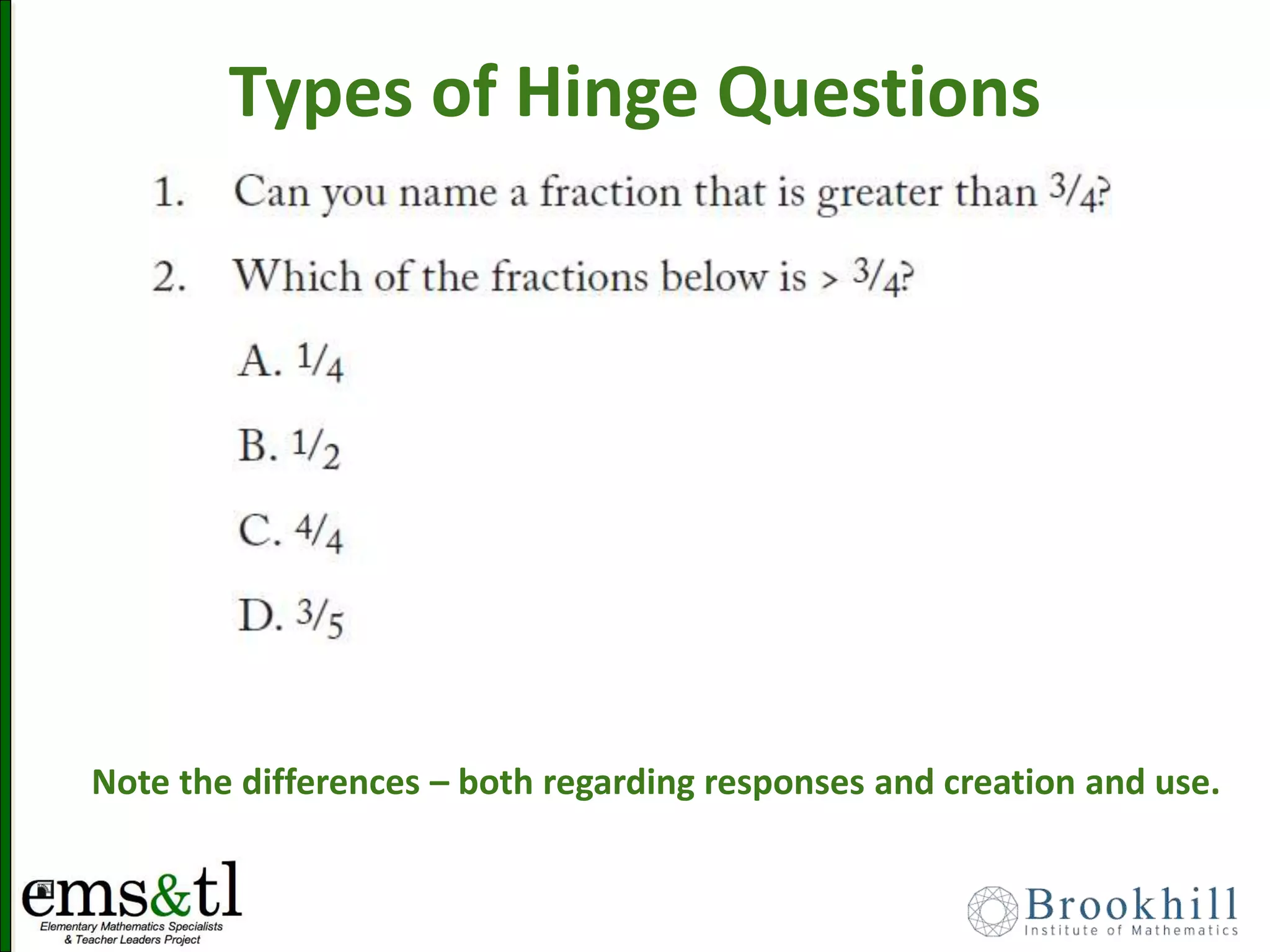The document discusses the importance of using classroom-based formative assessments (CBFA) to guide teaching and enhance student learning, emphasizing their connection to effective pedagogy. It outlines various CBFA techniques such as observations, interviews, hinge questions, and exit tasks, highlighting their role in improving student achievement and providing immediate feedback. Additionally, it addresses the need for proper understanding and implementation of these assessments in the classroom context while acknowledging challenges and limitations in their current usage.
















![Observations
2.G.A.2
Paige received a large cookie
for a prize. She wanted to
share it with her two
friends. How much of the
cookie would Paige and her
friends have to eat? [Use a
circular or rectangular
region to represent your
solution]. (2.G.A.2)
5.NF.B.7+
Chase had ¾ of large cookie
that he wanted to share
with his two friends. How
much of the cookie would
Chas and and his friends
have to eat? [Use a circular
or rectangular region to
represent your solution].
(5.NF.B.7+)](https://image.slidesharecdn.com/03-03-2016edweekwebinarskipfennell-160309191449/75/03-03-2016-ed-week-webinar_skip-fennell-17-2048.jpg)




































